|
Whereas eight-week-old puppies are universally accepting of people, adolescent dogs naturally become wary of anything unfamiliar, including noises, objects, dogs, people and places. It is not uncommon for adolescent dogs to become fearful or reactive. As puppies grow older, the world becomes a scarier place. To prevent dogs from becoming wary of children, men, strangers, skateboarders, other dogs, loud noises, vacuum cleaners, nail clippers, collar grabs, etc. etc. etc., take your time when exposing your puppy, adolescent, or newly adopted adult dog to novel (unfamiliar) stimuli, settings and situations and make sure you classically condition your dog not only to tolerate, but also to thoroughly enjoy all of these potentially scary stimuli. Simply put, classical conditioning helps your dog form positive associations with all sorts of stimuli. Let’s say your puppy has grown to be scared of men. Rather than feeding your dog in a bowl, use his entire allotment of kibble for classical conditioning. For one week, take your dog to dine downtown. Sit on a bench and offer him a piece of dinner kibble each time a man walks by. For a second week, ask male passersby, “Excuse me, would you mind hand-feeding my dog? He’s really shy of men.” In no time at all, your dog will form a positive association between men and FOOD and might muse, “Ah yes, I love men.” The most important times to classically condition your dog are when visitors come to your house, on walks, in dog parks and especially during dog training classes. From puppyhood onwards, have every visitor to your house offer your dog a few pieces of kibble. Even though your puppy may be Mr. Sociable right now, unless you take this precaution, he will most certainly become more standoffish, asocial, and maybe antisocial as he grows older. Please do not take your puppies golden demeanor for granted. Have every household visitor offer a food treat to your puppy/dog and then your dog will look forward to visitors. Additionally, teach each visitor how to use the treat to teach your dog to come, sit and stay. Most people walk their dogs too quickly through the environment. There is simply too much for the dog to take in — people, other dogs, other animals, noises and smells — “Oh there’s a squirrel. I smell Trixie. Hmm! I just love the smell of her urine. Trixie! Trixie! Trixie! Son of a female dog! That motorcycle was soooooo loud! Oh, oh, oh! Cat poo! Woo hoo! Yes!!! And another squirrel. Two squirrels Oh what’s my owner saying now? Oh, S.O.A.F.D! There’s Bruno. OH he’s HUGE! And his owner looks nervous. Why’s my owner jerking my leash? Is that a discarded hamburger wrapping. There’s a cat. I know there’s a cat. Can’t see it. Can’t hear it. Can’t smell it, but I know it’s there somewhere. I can feel it. She’s looking at me. Where is she? Oh NO! Children! I hope they don’t come this way. Another squirrel. Is that the mail truck three blocks away? I hope I get back home before he come.” And so it goes on. The dog’s brain goes into sensory overload. The dog is over-stimulated and instead of paying attention to his owner he becomes hyperactive or reactive. When walking a dog, on-leash or off-leash, stop every 25 yards, let the dog take his time to look, listen and sniff and wait until he establishes eye contact (acknowledges your presence) and accepts a couple of pieces of kibble before saying “Let’s go” and continuing the walk for another 25 yards. Every couple of hundred yards, find a comfortable place to sit and wait for your dog to settle down and get used to the new environment. Offer your dog a piece of kibble every time the environment changes, for example, each time a person passes by, and maybe two pieces of kibble for a man, a piece of freeze-dried liver for a boy, and three pieces of liver for a boy on a skateboard. When dogs visit unfamiliar environments, offering then kibble is a great temperament test for trainers, veterinarians and owners to check that the dog is at ease. If the dog refuses kibble from the owner, he is probably anxious about the environment — so give him time to adapt. However, if the dog accepts kibble from his owner but not from his veterinarian or trainer, then the dog most probably feels ill at ease with the veterinarian or trainer and so, proceed slowly — verrrry slowly. For an adolescent or young adult dog, dog parks and training classes can be pretty scary environments, usually with a high-voltage social scene. Always give the dog a chance to relax and get used to the environment. Before attempting to train, wait until the dog settles down and appears at ease. Periodically keep offering pieces of kibble. Once the dog feels at ease, he will take the kibble and start to pay attention. Keep offering the kibble regardless of the dog’s behavior; it doesn’t matter whether the dog is hiding and peeking, barking, growling, or snapping and lunging. Keep offering the kibble so that the dog eventually forms positive associations with the class setting, the other dogs, the trainer, and other people. Some people are afraid that offering kibble during classical conditioning might unintentionally reinforce bad behaviors. Certainly, when training, we are always classically conditioning and operantly conditioning at the same time. If you use your voice when classically conditioning, “There’s a good boy, it’s OK,” you might unintentionally reinforce all sorts of unwanted behavior. The classical conditioning still works for us but the operant conditioning works against us and makes the problem worse. In time, the dog will begin to feel OK about the situation but will continue barking and growling, or hiding and shaking, because that’s what he’s been unintentionally trained to do. However, by using food when classically conditioning, you can only reinforce good behavior because a dog cannot bark and lunge or eyeball another dog at the same time as turning to face you to take food. For example, let’s say we are trying to classically condition a dog that is barking and lunging at another dog. We offer food, but the dog ignores our offerings and continues barking and lunging. Eventually though, the dog barks himself out and sniffs the food, whereupon he turns away from the other dog to take the food. Taking the food does not reinforce the dog’s barking and lunging. On the contrary, the food reinforces the dog for stopping barking and lunging, for turning away from the other dog and for turning towards his owner. After a couple of dozen repetitions, the dog will begin to form positive associations with the sight of other dogs. “I love it when other dogs approach because then my owner feeds me dinner.” And as a bonus, the dog’s trained response to seeing another dog is to turn away from the dog and to sit quietly and expectantly facing his owner. As classical conditioning proceeds, the dog is less and less inclined to react in a negative manner towards the scary stimulus. Once a dog forms positive associations with stimuli, such as a vacuum cleaner, other dogs, or people, he doesn’t want to growl or snap and lunge at them. You simply cannot do too much classical conditioning. Use patience and persistence; it ALWAYS pays off.
His passion, enthusiasm and love for the dog is evident in his many years of experience as well as his hunger to learn more and it is all this that has made him what he is today! He has had extensive training in the area of canine behavior and training! His studies have included 2 summers in the kennels of the New Skete Monestary, 1 year mentoring with Dr. Ian Dunbar, 1 year mentoring with Ed Frawley, and 2 years association with Michael Ellis!
He is a current Professional Member of the International Association of Canine Professionals and owns and operates his own dog training business with 45+ years of professional Canine Training experience in his kitty! You are in good hands with Scott! It is with immense pleasure that we bring you news that another rescue organization has received financial aid from Dr. Jane’s Foundation. This month’s featured grant recipient is a committed group of volunteers working to alleviate the needless death and suffering of animals in Texas. In operation since January of 2004, True Blue Animal Rescue is a non-profit organization dedicated to rescuing abused, neglected and abandoned animals, providing necessary rehabilitation services and locating great new forever homes. They have put significant resources towards developing working relationships with shelters and law enforcement agencies in nearby counties. Their ongoing efforts to provide low-cost spay-and-neuter services have directly led to a decrease in the number of strays and unwanted litters of dogs in Washington County. Similar efforts have helped to diminish feline overpopulation in a dozen nearby feral colonies. This small-but-mighty rescue group also maintains a substantial volunteer base (10 officers and 20 members) who provide assistance in raising much-needed funding. With an extensive network of foster parents, True Blue has made a significant impact in their corner of the Lone Star State. In 2013, they fostered approximately 75 animals and expect to meet that benchmark this year, too. Successful adoptions last year beat the 100-mark, with 52 dogs, 14 cats, 18 horses and 17 donkeys finding new forever homes. There’s no question that saving a life is noble, and it’s the primary enterprise of most rescue organizations. The immediacy of present problems – handling medical crises and providing for daily needs, such as shelter, food and attention – these activities take a great deal of time and energy. However, these are symptoms of a broader problem – namely, pet overpopulation. Simply put, there are just too many animals in need and not enough people adopting rescued pets. Like other ambitious groups, True Blue actively promotes spay-and-neuter procedures to put an end to the practice of euthanasia as an acceptable strategy for dealing with unwanted companion animals. To really make a difference, to fundamentally change the future, the True Blue team is making an investment in the long view. At their Washington, TX facility, they offer an educational program that teaches children about proper animal care, the importance of developing compassion and empathy for all creatures, and techniques for building their own self-esteem. In a very real sense, these lucky children are learning to become informed pet parents and future advocates for animals. Aptly named ABLE - Animals Bridge Love and Education – True Blue has seen firsthand the dramatic impact this program has had in training tomorrow’s adults. The award given by Dr. Jane’s Foundation has been allocated to the fund that covers the costs of alteration surgeries for their rescues. Our grant will help True Blue to continue providing this valuable service to their local community. DeAeth expressed sincere gratitude for our “generous gift”, adding that these funds have “helped us spay even more animals and find them homes”. Here are just a few of the many animals that have been saved by the good works of True Blue Animal Rescue. In fact, everyone you see here is available for adoption … yes, including the horse! This adorable mom and litter were saved from certain death. Affectionately dubbed ‘The Charlie Brown Family’, Lucy and her six babies - Peppermint Patty, Sally, Marcie, Linus, Shermie and (of course) Charlie - were on a ticking clock, with mere days before they would have been euthanized. Upon intake, all seven dogs were suffering from kennel cough, but thanks to the excellent care of their foster family, two weeks later they had fully recovered. Lucy will be living out her days with her foster mom (now her adoptive mom), but the pups will be available for adoption as early as July. This charming little Australian Cattle Dog and Terrier Mix is another rescue who faced an uncertain end at a kill shelter. Fortunately, one of True Blue’s dedicated volunteers learned of Bandit’s status from an animal control officer and intervened in the nick of time. Just over a year old, this lovable pup yearns for the great outdoors, and is positively thriving in foster care. Bandit’s seeking a family whose energy level and enthusiasm for life matches his own. This mustang was found wandering the streets with her foal in tow. Both Jessi and her daughter, Starlet, were utterly emaciated and exhibiting high levels of fear and anxiety. Rescuers could only guess at how long they’d been living off the land. Thanks to True Blue’s superb veterinary care and quality placement, both are living happily with a foster family. Anyone looking to adopt Jessi should be an experienced equestrian, as both horses appear to have never had any previous training. This sweet Australian Shepherd endears himself to all who meet him. Smokey Lonesome’s past is a mystery, as he just showed up at a home that was fortunately inhabited by a family willing to feed the obviously hungry pup. His need for a square meal had finally won out over his conspicuous fear of people. It was clear to his rescuers that Smokey had endured an ordeal, likely at the hands of an abusive owner. However, with True Blue’s dedicated trainer and a caring foster family, Smokey Lonesome’s future doesn’t look quite so forlorn any longer. If you or someone you know would be interested in supporting this superb organization, we encourage you to visit their website at t-bar.org (or call them directly at 936-878-2349). You never know … you could end up finding your new best friend! Dr. Jane’s Foundation has provided funding to animal rescue groups all over America since 2007. Our non-profit wing could not have achieved what it has without the continued patronage of our customers and the contributions of individual donors. On behalf of all the dogs, cats, horses and donkeys now living in safe, caring environments thanks to True Blue Animal Rescue, we thank you for caring enough to make a difference. If you’ve had experience with an animal rescue organization worthy of special recognition and financial support, please let them know that we are still accepting grant applications for 2014. Interested parties should email Regina@myhealthypetbiz.com … one of our customer service agents will be happy to share application details. For many of us, the pressures of modern life can be quite taxing, leaving us little one-on-one time with our companion animals. And yet, experts believe that positive changes in your pets’ temperament can be brought about just by your spending quality time with them. With that in mind, it’s easy to see that by enriching the bond you share with your companion animal, your quality of your life will improve, too. The first step in your efforts to enhance these interactions is to assess your current level of personal contact. Perhaps the best way to achieve this is by making a list of the typical weekly interactions you engage in with your companion animal. Once you create the list, grade yourself by asking whether or not you could, or should, be doing more. If you’re unsure what you might do to enjoy quality time together, don’t worry - here are some tips for making the most of your time together and the best of your pet’s time alone. Consider incorporating any or all of these in your daily life … Set aside a few minutes in the morning to groom your cat or dog. While brushing or combing, talk to them about your plans for the day. If your pets don’t enjoy grooming, spend a few minutes just petting and praising them. Whatever your daily morning interaction, try to do it at same time and in the same place. Your companion will find comfort in the regimen – and so will you. Leave something that smells like you, like a pillow case or a recently-worn shirt, on or near your pet’s favorite spot. Your four-footer will find your scent reassuring during your time away from home. If you have an answering machine, call home when you’re away and talk to your pet. Hearing your voice can be reassuring to them during your absence.When you return home after a long period away, greet your companions as if you’ve only been away for a few minutes and then do whatever chores are most pressing. Afterwards, do something that he or she will enjoy, like (if you have a dog) a game of catch, hide-and-seek, or take a long walk. No matter what you do together, be sure to tell him or her how much fun you are having. If you have cats, we recommend playing with a ball or using a fishing pole with dangling feathers – you know your cat loves the chase! It’s important to dedicate this time to your pet alone, so consider leaving your cell phone in another room if you’re indoors, or indoors if you’re outside. Take it from me – your undivided attention makes a big difference. Incorporate teeth cleaning, ear cleaning and/or nail trimming into your new routine. Too often, these health necessities are viewed grudgingly as chores. Commit to making this time as fun as possible. It helps to think of these activites like time at a spa. Massage is a wonderful way to connect with your companion animals. Check out one of the many pet massage books currently on the market to help you develop a technique that’s easy on you and feels good to them. There is evidence to suggest that massage can improve your pet’s health, and it may even relax you, too. Whatever you choose to do to improve your relationship, even if it’s just one of these suggestions, will help you and your companion animal to lead more fulfilling lifetimes. Thank you for all that you do to make a better world for your companion animals,  Dr. Jane Bicks For most of us, the meal of the year is quickly fading from memory. While families, friends and neighbors gathered together for Thanksgiving, others were slowly picking up the pieces of their lives after Hurricane Sandy, the largest Atlantic storm on record. Pummeling the East Coast beginning on October 29th, the death toll of the 1,000-mile-wide superstorm is estimated to be 113 human lives. Not tallied, and possibly unknowable, are the numbers of companion animals lost in the wake of this devastating weather event. Even as America watched live reports and montages of unimaginable devastation, our foundation’s Board of Directors began thinking of the lives that weren’t featured in the earliest breaking news stories … those of homeless dogs and cats. To assist in rescue and recovery efforts, an emergency session was convened to determine how the non-profit wing of Life’s Abundance might best provide assistance to our neighbors to the north. After reviewing several options, the Dr. Jane’s HealthyPetNet Foundation approved emergency funding for two rescue organizations, both of which oversee and coordinate efforts of dozens of other animal rescue groups. Knowing that time was of the essence, two checks – each for $3,000 – were overnighted to New York’s Adopt NY and New Jersey’s Coalition for Animals. In what follows, we’ll review some of the highlights of what your donations helped to make possible. Award to Adopt NY in New York: Founded when two rescue groups joined forces, volunteers for Adopt NY have dedicated years to saving abandoned companion animals from uncertain ends on the streets of one of America’s most populous areas. With their combined energies, they’ve created a truly democratic operation, joining forces of 44 non-profit rescue groups. This affiliation allows rescues to not only connect to other volunteers for advice and support, but also enables them to connect with pet foster parents and potential adopters. Bottom line, more animals are being saved from long-term shelter stays and euthenasia thanks to Adopt NY’s efforts. After Sandy struck New York, caretakers – many of whom have dedicated their lives to fighting animal homelessness – found they no longer had a foster home to offer. In addition to the dogs and cats who were already homeless, there is now a whole new wave of animals made homeless by the storm. Adding insult to injury, damage was reported in at least one shelter facility, where floodwaters ruined food and medical supplies. Adopt NY lost no time mounting a response to the unfolding tragedy, seeking to provide the two most pressing necessities – shelter and supplies. Even as they began making calls and appeals online for food, medicine and places to stay, they also started asking for financial contributions. Dr. Jane heard their appeal, which ultimately led to our emergency grant of $3,000 slated toward the costs of feeding hundreds of animals. Renting a delivery truck to transport seven tons of food and supplies, volunteers embarked on a 14-hour trip through the five boroughs (including Yonkers) doling out supplies to rescues with the greatest needs. In the words of Rob Maher, Fundraising and Corporate Outreach Director, “Thanks in large part to the generosity of the Dr. Jane's HealthyPetNet Foundation, we’ve purchased over 14,000 lbs and counting of high quality dog food, cat food and cat litter.” And, thanks to Adopt NY’s negotiating skills and the goodwill of their suppliers, everything purchased was at a discounted price, allowing the rescue to maximize the buying power of the donations. Within just three weeks of the disaster, more than 800 people had already applied to become foster parents for homeless pets. All of those applications have been distributed to Adopt NY’s network of rescues. It is our fervent hope that all of the homeless animals will find long-term, loving places to call home … and very soon. Award to Coalition for Animals in New Jersey In continuous operation since 1994, Coalition for Animals (CFA) has been under the direction of Rose Rosenbaum for more than a decade. Not limited to saving cats and dogs, CFA has been involved in a diversity of animal species, including creatures from zoos and circuses, “wild” animals saved from fur industry merchants, as well as more traditional farm animals. When we first spoke to Rose on November 9th, CFA was still trying to ascertain the needs of their affiliated rescues. Even as late as two weeks after landfall, some rescues located near the Atlantic shore remained unreachable. Rose led by example, loading her car with hay for temporary bedding for numerous feral cat colonies, and driving to several locations to judge the extent of the damage. Based upon her investigations and requests for information, they divvied up our contribution and redistributed 100% of our $3,000 grant among ten of the Coalition’s rescues. Each of the ten received at least $100 and not more than $500, and amounts were dependent upon the severity of each group’s need. - Act for Animals, based in Maple Shade, which post-storm is providing meals for approximately 300 feral cats in and around Camden, a significant increase in the homeless feline population. - Located in New Egypt, All About Them Giant Breed Rescue provides care for 37 large canines. In addition to taking on a Rottweiler, two Great Danes and an English Mastiff – each from a different shelter dealing with their own storm-related problems – they also took in two cats who survived perilous flood waters. - Based in Spotswood, All Critters Rescue suffered losses from their flock of saved animals, including two sheep and two ducks. The animals perished when a tree crashed into their barn and high winds demolished the duck shelter. In spite of their grief, they heeded the call when asked to take in two more creatures, both cats displaced by the storm. - Just prior to Sandy’s landfall, Point Pleasant Beach’s Shore Area Volunteers 4 Animals intervened in a hoarding situation, saving the lives of 60 cats. Having just gotten the felines settled, most of whom required medical care due to dire living conditions, the power went out. The medication required refrigeration; consequently, all of it was ruined. In spite of this remarkable bit of bad timing, these die-hard rescuers still took in an additional cat who suffered blindness due to high blood pressure during the storm. What the group had classified as a “devastating” scenario was turned around by an amazing act of generosity. A donor gave them a brand new generator, a gift that was personally delivered all the way from Texas … that’s a 34-hour drive, one-way! - Stanton’s NJ Animeals provides food for homebound families who share what little they have with companion animals. Some of these folks endured great hardship due to Sandy, and Animeals has been doing their best to make sure their people have food to eat. - Already tasked with feeding several feral cat colonies, Seaside Heights Animal Welfare Group witnessed firsthand a huge jump in the number of homeless cats after the storm. They’ve been doing their best under difficult circumstances to feed hundreds of cats, many of whom are presumably in the wild for the first time, having been abandoned - voluntarily or involuntarily - due to the storm. - In Barnegat, One By One Cat Rescue has taken in half a dozen new cats and is doing their level best to make room for more. One of the queens took up residence in a stranger’s garage, giving birth shortly before the storm hit. The garage was deluged with flood waters, but all six – that’s five healthy kittens – were saved, and are now comfortable at a volunteer’s residence. - The remaining three rescues, each with their own resilience and dogged determination to rescue those affected by Sandy, have dedicated their efforts solely to saving the lives of cats. While specific details about their endeavors are sparse at present, we honor their work in stating their names and locations: Calling All Cats Rescue in Bayville, Operation Kindness in Little Silver and God’s Creatures Ministry located in Wayne. We salute each and every one of these small organizations for every life they have saved. While no completely accurate count of the number of animal lives saved and bettered may ever be known, our readers can take heart in knowing that scores of companion animals have been positively affected by their support. We give our sincere thanks to all of our readers and customers who, through their personal donations and continued patronage, made these emergency donations possible. The same goes to all of the volunteers – many enduring hardships of their own – who have dedicated their time and energy to making life better for the feline and canine survivors of Hurricane Sandy. If you would like to make a donation to the Dr. Jane's HealthyPetNet Foundation, you can do so by clicking the above logo and complete at checkout or you can send a check to The Dr. Jane's HealthyPetNet Foundation, Inc. at P.O. Box 1425, Palm City, Florida 34991. Or, if you would like more information about the foundation, please email llogue@healthypetnet.com.
As required by the Florida Department of Agriculture and Consumer Services, we furnish our Registration Number CH22693 and the following statement: A COPY OF THE OFFICIAL REGISTRATION AND FINANCIAL INFORMATION MAY BE OBTAINED FROM THE DIVISION OF CONSUMER SERVICES BY CALLING TOLL-FREE (800-435-7352) WITHIN THE STATE. REGISTRATION DOES NOT IMPLY ENDORSEMENT, APPROVAL, OR RECOMMENDATION BY THE STATE. My name is Banjo. I am a Blue Pitbull Terrier who was rescued by the BEST Mom a pup could ever want! You see, she thought she was a "cat person" until she found me! Now we are best buddies...she takes me with her everywhere! I was super picky with my food and my Mom was worried because I wouldn't eat. One day she brought home a little bag of Life's Abundance Premium Health Food for Dogs & Puppies and mixed a little into my food. OH BOY! I carefully took each morsel of deliciousness into mouth. It was so YUMMY! When I was done, that old YUCKY stuff was left sitting in the bowl! And NO...I did not go eat that stuff later. I left it until my Mom filled my bowl with more Life's Abundance! Take the CHALLENGE! Your pets will love you for it! Here are some pictures of me and my Mom! I LUV her!  Love, Banjo happy customer since 2010 ps. the cat likes it too According to pet parents, one of the more common cat behavioral problems is aggression between cats in a multi-cat household. The source of the explosive behavior could be due to any of several reasons, including incompatible personalities, territorial competition or overcrowding. Cats normally establish a hierarchy among themselves, but the tricky thing is it can be fairly unpredictable and can change suddenly: cats that have gotten along for a long time may experience an abrupt falling out, leaving pet parents mystified. If this happens, try to determine if there has been a change in the household, such as visitors, renovations, a new baby, going on vacation, you having an illness, a change in your routine, etc. All of these seemingly inconsequential changes are stressful to your feline and can have profound effects on their behavior. Aggression following a separation between your cats, such as after a cat returns home from a visit to the veterinarian, can cause non-recognition aggression. Redirected aggression can be caused when one cat is startled by an external stimulus, such as seeing an intruding outdoor cat through a window, and attacks the other as a result of agitation. Most of these situations can be remedied by separating the cats with time to cool down followed by a gradual reintroduction to each other paired with positive experiences and things that will provide pleasure, such as affection, toys, catnip and/or treats. Before reintroducing your cats, dab a spot of cologne or dust a light layer of a scented dusting powder on them. This helps because all of the cats have similar scents. The best thing to do with cats is to try and reduce stress and aggression before things really escalate. Here are four tips on how to keep cat fights from happening in the first place: 1. Provide Sanctuary for Each Cat Many times, cats quibble over territory. Most cats prefer a little place to call their own, so find out where each cat likes to spend the bulk of time and make it a safe haven with a cat bed, some food and water, maybe a scratching post or cat tree and, if possible, a litterbox. 2. Practice No Reaction to Cat Quibbles If your felines are having a hard time getting along, it is very important for you to keep your body language and tone of voice relaxed and playful. Keep it light and say something like, “Come on silly kitties. Be sweet!” A soothing response on your part can help defuse the situation. 3. Distraction Works Wonders If your cats are hissing and tense, try distracting them with a toy, such as a laser pointer or a fishing pole. You can also toss treats or catnip near the kitties and speak in a relaxed tone - the key is to provide something distracting and enjoyable for the kitties. Do this as often as possible - the more positive time cats spend together, the better. 4. Feline Facial Pheromones There are a number of products on the market that copy a cat’s facial pheromone and create familiarity in the cat’s surrounding, and they can help crabby cats during stressful situations. They are available as a plug-in or a spray. How long it will take for these methods to reduce fighting and tension in your multi-cat household depends on several factors, including the size of the meltdown and how long the problem has been going on. For severe cases, there are medications available to help your cat cope, so talk to your family veterinarian to find the method that works best for your cat. What do you do if you witness an actual cat fight between your beloved felines? The most important thing to remember is never attempt to breakup the fight by handling the cats. In the ruckus, one or both of your cats can injure you with painful bites or deep scratches which can become infected and require antibiotics, sutures or surgery, or lead to a condition called Cat Scratch Fever. Cats are quick and powerful and in a cat fight, seconds count. To break up the fight, try tossing a jacket or blanket on top of them, or throw a soft pillow in their direction. Striking a section of rolled-up newspaper against something also works, as the sudden sound startles them. If you have a history of cat fights in your home, you should keep a stash of newspaper available. As a last resort, sprinkling them with water will always break up a fight. As soon as they are separated, close them in separate rooms to allow them to cool down. Once they are calm, gently assess them for signs of bleeding or swelling. Approach them slowly and speak in a soothing manner. It is also important to examine your cats for two days following the fight as well, as abscesses can develop 24-48 hours after the fight. If you find any wounds, call your family veterinarian. My sincere hope is that by following some of these suggestions, cooler heads will prevail in your multi-cat household. Thank you so much for all you do to make the world a better place for companion animals.  Dr. Jane Bicks  As a holistic vet, I’m frequently asked, “How can I deal with my cat’s bad attitude?” The problem area dubbed “feline aggression” can be complicated, upsetting and potentially hazardous for pet parents. Not only can cat bites and scratches really hurt, they can transmit diseases, too, such as cat scratch fever (yes, it is real). While most cat moms and dads prefer a purring lap-warmer, especially on cold winter nights, some felines need extra help learning how to sheathe their claws. Unfortunately, feline aggression is not well understood or handled appropriately. An important first step in dealing with this frustrating issue is to understand the behavior. Learning why a cat lashes out can help pet parents deal with the issue patiently and properly. In this post I’ll be covering the five basic types of aggression in cats. Pain- or Health-Related Aggression A cat who is experiencing pain or ailing may exhibit aggressive behavior, so it’s vital that your first stop be a trip to your vet, especially if what you’re witnessing is a recent change in behavior. Medical conditions that can cause pain and aggression include abscesses, dental disease and arthritis. Additionally, hyperthyroidism is associated with increased aggression in older cats. Alleviation of underlying medical conditions can often resolve the aggressive behavior. Play Aggression This form of aggression is typical of young cats and kittens. You can recognize play aggression by the feline’s posture: stalking or crouching like a lion, lashing the tail from side-to-side, especially when their pupils are dilated. As unsuspecting “prey” passes, whether it’s your dog or your spouse ... pounce! The cat who attacks your ankle and then disappears in a flurry of fur isn’t trying to maim you - he’s playing, albeit aggressively. The best way to address play aggression is integrate a toy, such as a cat fishing pole or a laser pointer, into play sessions. These toys serve a dual purpose - they will hold your cat’s attention while burning off excess energy and keep your hands out of the “strike zone”. A stuffed sock can provide the perfectly-pouncible object. If additional measures are required to curb the behavior, consider blocking access to your cat’s favorite stalking places or use a noise deterrent, such as shaking a can full of coins. Remember that you must use a noise deterrent within the first few seconds of the inappropriate behavior for it to be effective. Never let your cat, even when he is a cute kitty, view you as an acceptable chew-toy. You might also trim her nails to minimize the “ouch factor” (here’s a video that shows you how). Fear Aggression When a fearful cat encounters an unpleasant situation, such as the veterinary office, he will likely take steps to protect himself. Fear clues include crouching with tail and legs tucked under, hissing and baring teeth, flattened ears, dilated pupils and fur standing on end. If your cat is fearful, it is important to identify and avoid, if possible, the thing triggering the fear. To overcome fear aggression, you can try to desensitize your cat to the fear-inducing object by keeping it at a distance and rewarding your cat with treats for non-aggressive behavior. Also, try to minimize stress in a fearful feline’s home environment. If your cat is completely out of control, have your veterinarian refer you to a behavioral specialist who can work with you and possibly prescribe medications to get your cat through the rough spots. Redirected Aggression I like to refer to this type as “innocent bystander aggression”. Redirected aggression typically occurs when a cat is aroused by one stimulus, such as a bird outside, when another pet or person intervenes. A cat exhibiting redirected aggression can be staring at something while growling and pacing with a lashing tail and dilated eyes. Avoid this cat until he has calmed down because interaction can lead to injury. If you can identify the stimulus that sets off your cat, you may be able to prevent the aggression. If it’s an external stimulus for an indoor cat, try using sticky tape or window blinds to prevent him from perching on windowsills. This, coupled with motion-activated lights (or sprinklers) to discourage outdoor visitors, could end the behavior. If your cat is aroused for an extended period of time, you can herd him with a thick folded blanket to a “time out” room equipped with food, water and litter. After he becomes calm, reward him with loads of attention. Overstimulation Similar to redirected aggression, overstimulation usually occurs when you are petting your cat and out of the blue they grab you and sink their teeth or claws into you. For highly reactive and vivacious cats, even a single long stroke down the spine can elicit an aggressive reaction. The key here is to recognize the warning signs: when the tail starts twitching, stop petting. Restrict your affections to areas that your cat enjoys, such as behind the ears or under the chin. If your cat grabs you, try not to overact; in fact, if you can, simply freeze … they will usually calm down quickly and let go. If you take-away anything from this article, I hope it’s to never, ever hit a biting or scratching cat. Physical punishment, even a light rap on the nose, can increase fear and anxiety, potentially worsening the aggressive behavior. With time and patience, you can turn even the most claw-happy kitty into a loving companion. Thank you for all you do to make the world a better place for companion animals, Dr. Jane We are really excited about this one as we had direct involvement in the process! We found Mary Stickney and her rescue and let them know about our grant program! HUGE thank you to the Dr. Jane HealthyPetNet Foundation for helping these dogs!! Family Gathering in the KitchenIt is our great honor to relay news of yet another financial award granted by Dr. Jane’s HealthyPetNet Foundation. In a recent round of funding, we subsidized the vital enterprises of a non-profit organization whose mission is to salvage the lives of dogs damaged by human greed. Located in Cortland, Nebraska, Stickney's Toy Breed and Rescue and Retirement Sanctuary specializes in small breeds, dogs who generally weigh less than 25 pounds. Nine out of ten of the dogs received into their care come directly from puppy mills, not just locally but from other states, too. The remainder of their dependents are spared certain death in shelters where they are slated to be euthanized. Stickney’s Toy Breed Rescue and Retirement Sanctuary began as a journey of discovery. In 1998, founder Mary Stickney entered the internet age with an investigation into the source of puppies sold in many pet stores. Upon learning that many of “those puppies in the pet store window” were born and raised in puppy mills, she decided to take action, converting her home into a refuge for dogs. Her residential property is situated on five acres and features an enormous dog run, a six-foot-high chain-link fence covering nearly a quarter of an acre … plenty of room to roam for these lively, tiny creatures. Mary has taken as her personal mission the rehabilitation of dogs who, when they come to her, are emaciated and broken in spirit. Almost without fail, every canine who comes to Stickney’s is in need of emergency veterinary care. By the time she enfolds her caring arms around these pups, some of whom have been discarded like trash, they are suffering from a range of physical and mental abuses and atrocious medical neglect, having barely survived appalling conditions that can hardly be called “living quarters”. All too often, she has witnessed first-hand horrors that can hardly be comprehended by many pet parents. Embraced for the First TimeMary’s day starts early, rising at 5:00 a.m. to put out fresh water and food for her dogs. At present, she also has a full-time day job, but her assistant Lisa DeNood provides care and supervision while she’s away from home. Evenings are spent trying to locate or meeting with potential adopters. No part of her home is off-limits to the dogs, whom she affectionately refers to as “the lucky ones”, many of whom share her king-sized bed at night. Her bedroom is brimming with floor cots and crates (the doors have been removed). She devotes significant energy to teaching them how to live in a home, as most have spent their entire lives in cramped cages. Helping these dogs overcome fear and anxiety is a major challenge, but one she approaches head-on. On the weekends, any number of volunteers arrive to play with the pups and to help handle the intake of new dogs. Saturdays and Sundays are prime adoption times, unless the team is rendezvousing to pick up new rescues. A Volunteer feeds treats to happy pupsThe adoption fees they collect go towards the high vet bills they routinely incur, although the extensive care provided leaves Stickney’s operating in the red much of the time. To help fill this need, the Board of the Dr. Jane’s HealthyPetNet Foundation stepped in and made a significant contribution. Awarded in August, our donation covered the costs of veterinary care for 12 dogs retrieved from two different puppy mills, one notorious for its deplorable conditions and the other a Dachshund mill whose violations were so egregious it was shut down by authorities. The medical problems of the rescued canines are not for the faint of heart … perhaps not even for the stalwart of heart. All 12 needed immediate medical attention. Two of these canines, a Maltese named Mindy and a Pomeranian named Cinnamon, were suffering from multiple issues, including kidney failure, dental infections, strangulated hernia, ear infections and other conditions too graphic to describe here. Despite the best efforts of veterinarians, both pups died during treatment as the extent of the trauma proved too extreme to survive. Emaciated from neglect, Mork will no longer be denied good nutrition Fortunately, the maladies of the other ten pups did not prove fatal. Thanks to the epic efforts of volunteers and veterinarians, they were able to save the lives of two Yorkies, one Maltese, one Shi Tzu, two Brussels and four Dachshunds. All of these pups needed extensive dental work, some suffering from conditions so severe that most of their teeth had to be extracted. Snickers, one of the Doxies, had ground her teeth down to mere nubs after repeatedly attempting to chew her way out of her cage. We hope that we helped ease this small operation’s financial burden, as well as playing a role in making sure their rescues receive the proper care they deserve. On behalf of all of these small-in-stature but large-at-heart dogs who are now starting down the road to recovery, and hopefully happiness, we offer Stickney’s our deep and abiding thanks. Their diligent work puts a spotlight on the dark side of the pet industry. Zeus enjoys his new-found freedom All of us here at Life’s Abundance are proud to sponsor the efforts of this remarkable rescue. The perseverance of Mary and her team in the face of gruesome and heart-rending situations gives us hope. While their rescues serve as grim reminders that there’s still much work to be done, still many left to save, every instance of healing teaches us we can improve the plight of companion animals everywhere.
Most especially, we are thankful to all of our readers and customers who, through their personal donations and continued patronage, make all of our grants possible. Your kindness and commitment to pet health has directly helped this devoted group of volunteers to make the world a better place for abused and neglected animals. We want to HELP MORE animals in need! If you know of a rescue group, please connect them to us! |
Take the....
Try our SAMPLES!
Archives
January 2019
Categories
All
|
| Our Mission - To help pets live longer, healthier and happier lives |
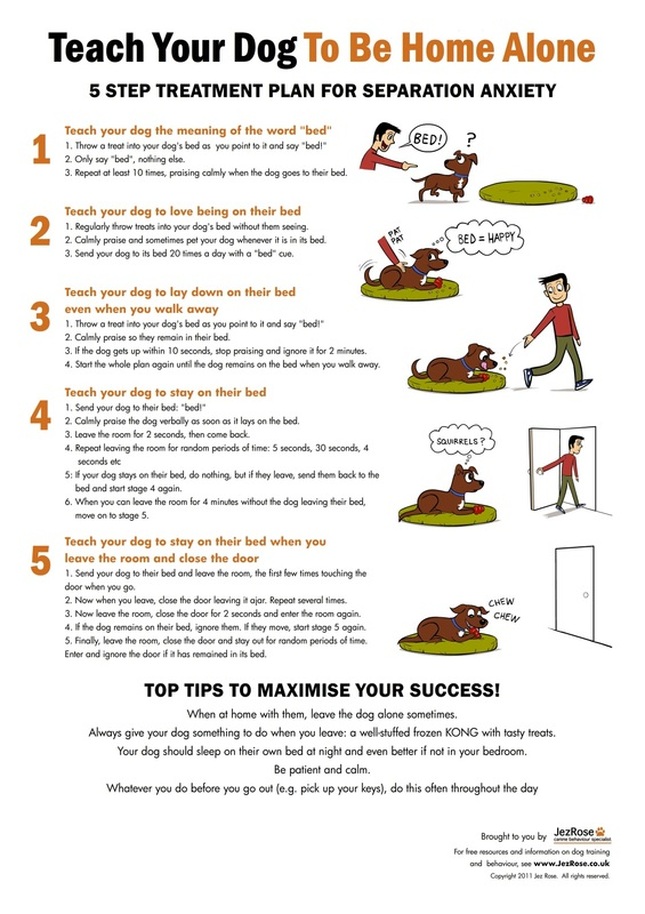



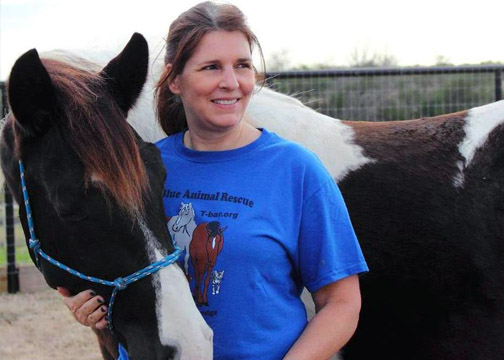
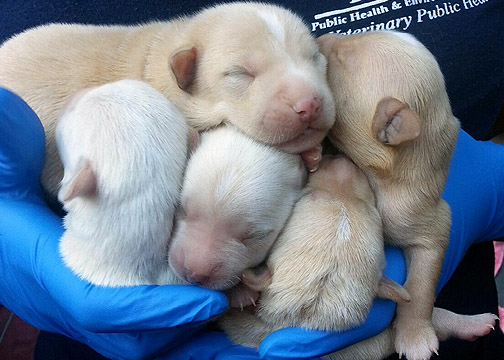
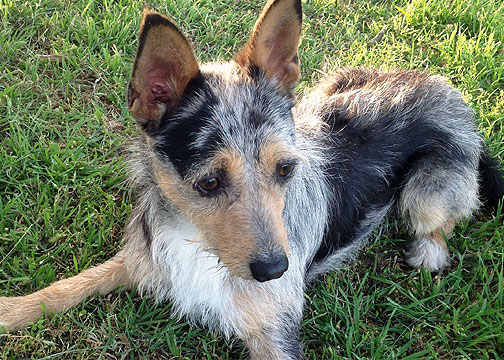
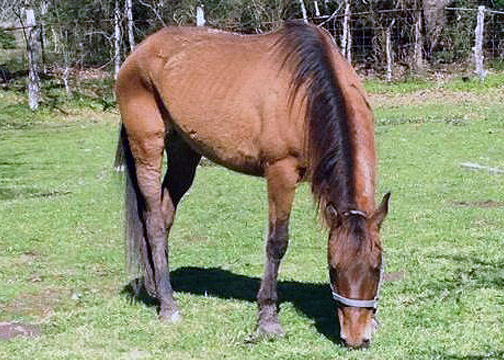


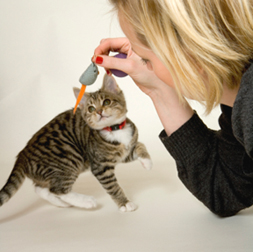

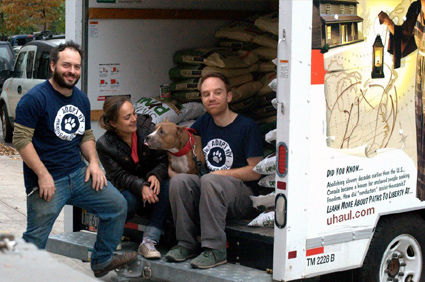
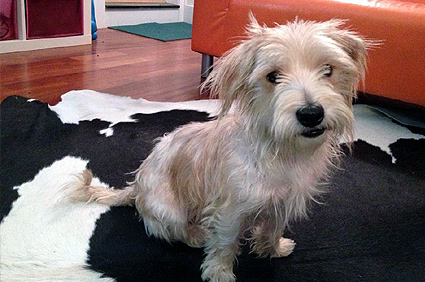
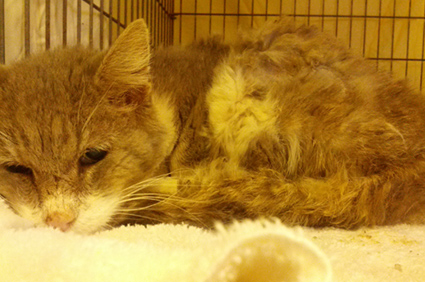
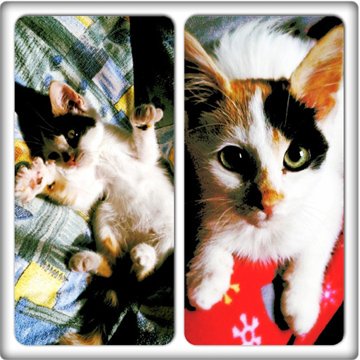
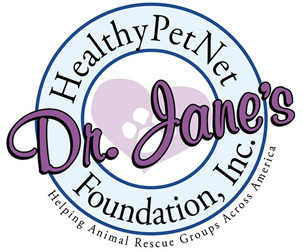

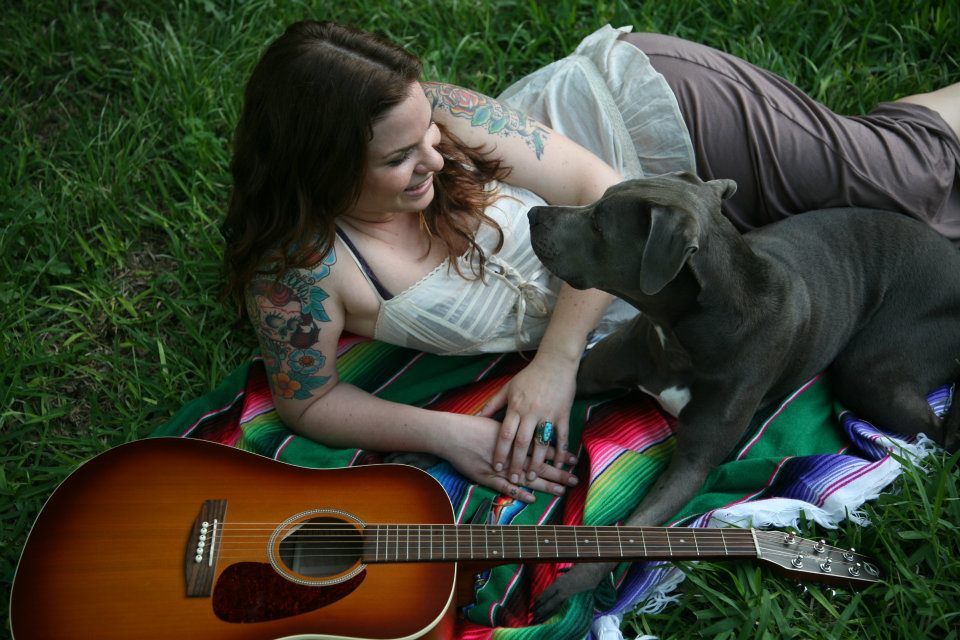

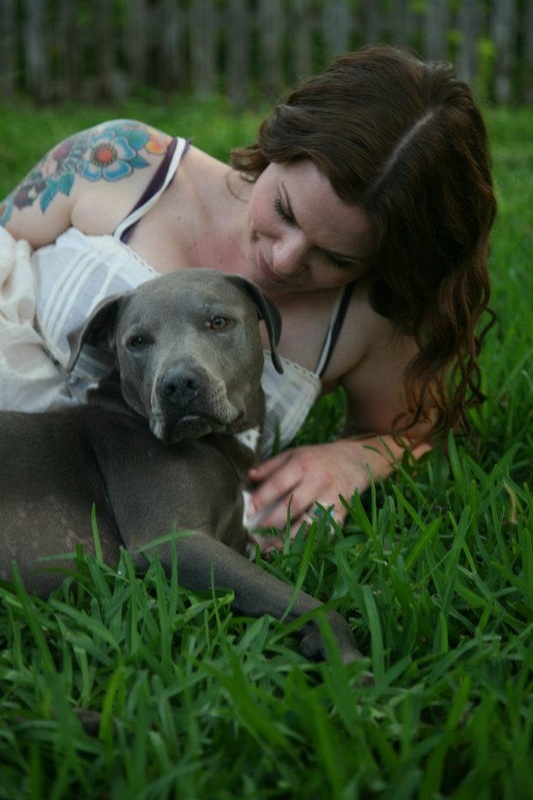

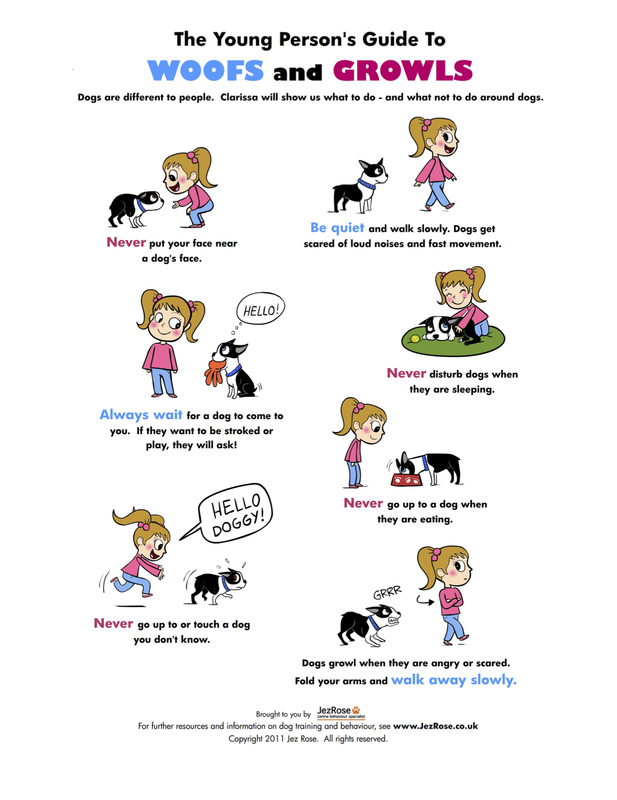

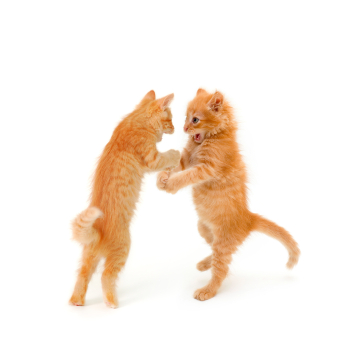
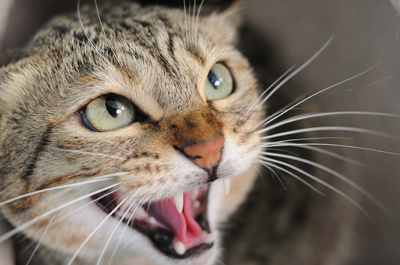
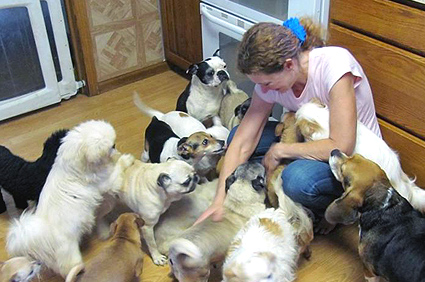
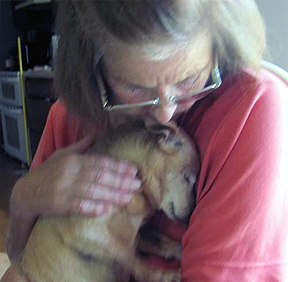
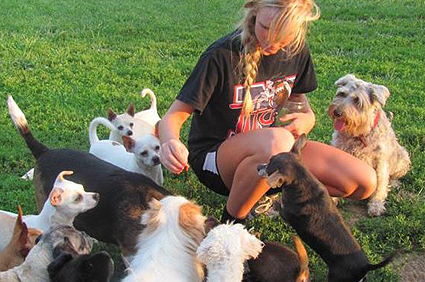






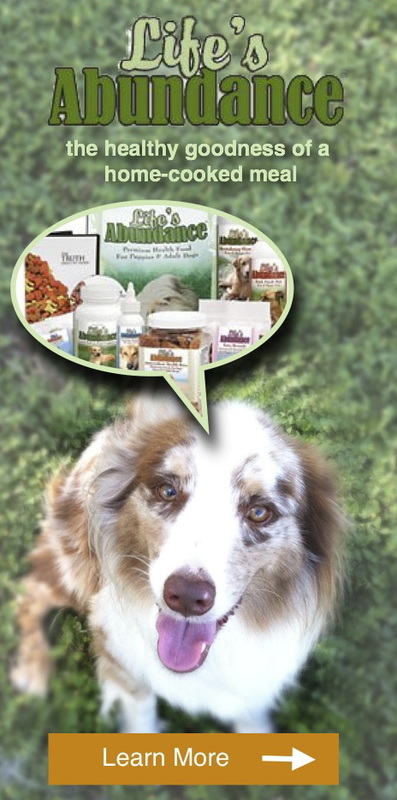

 RSS Feed
RSS Feed




